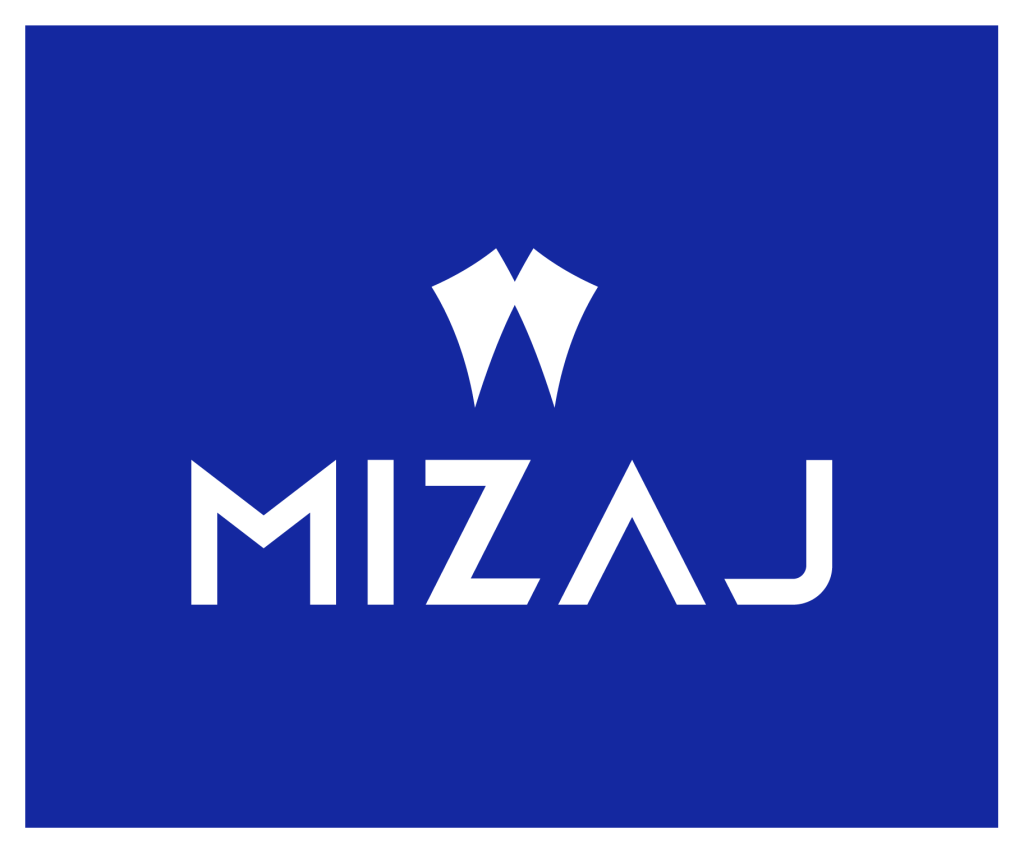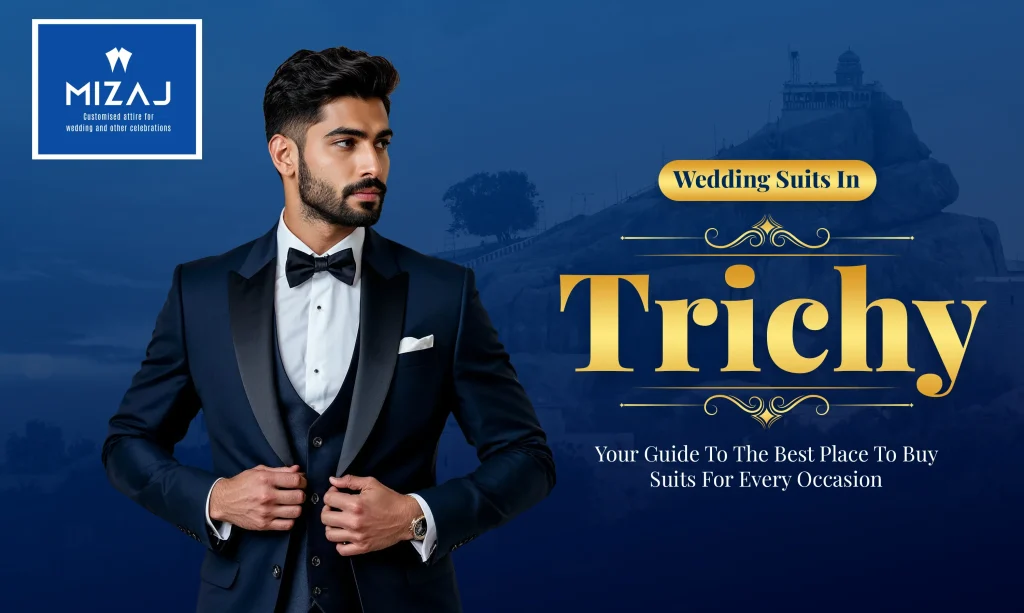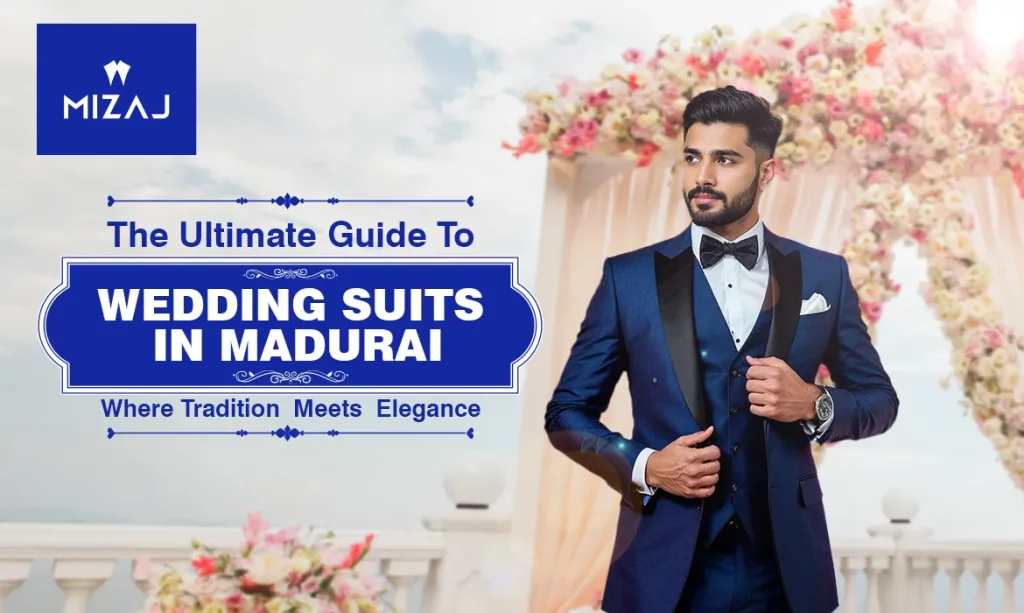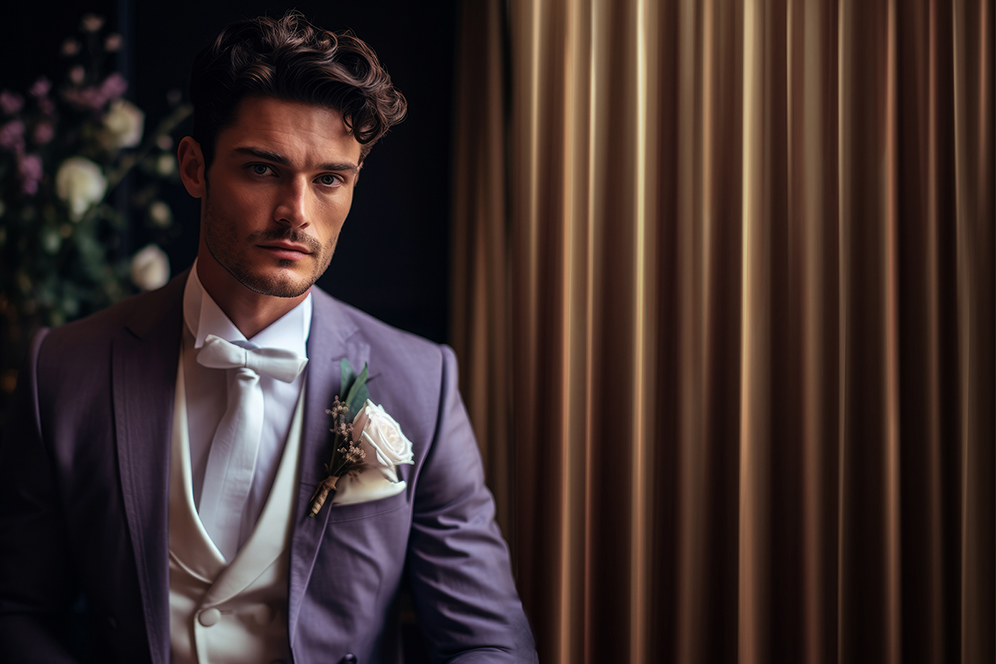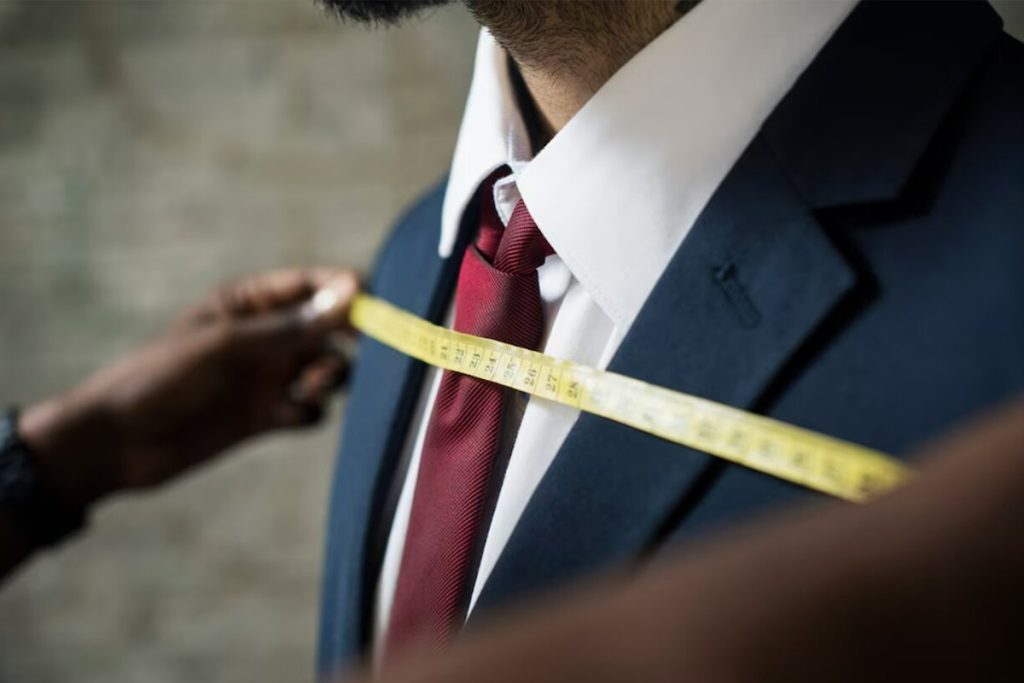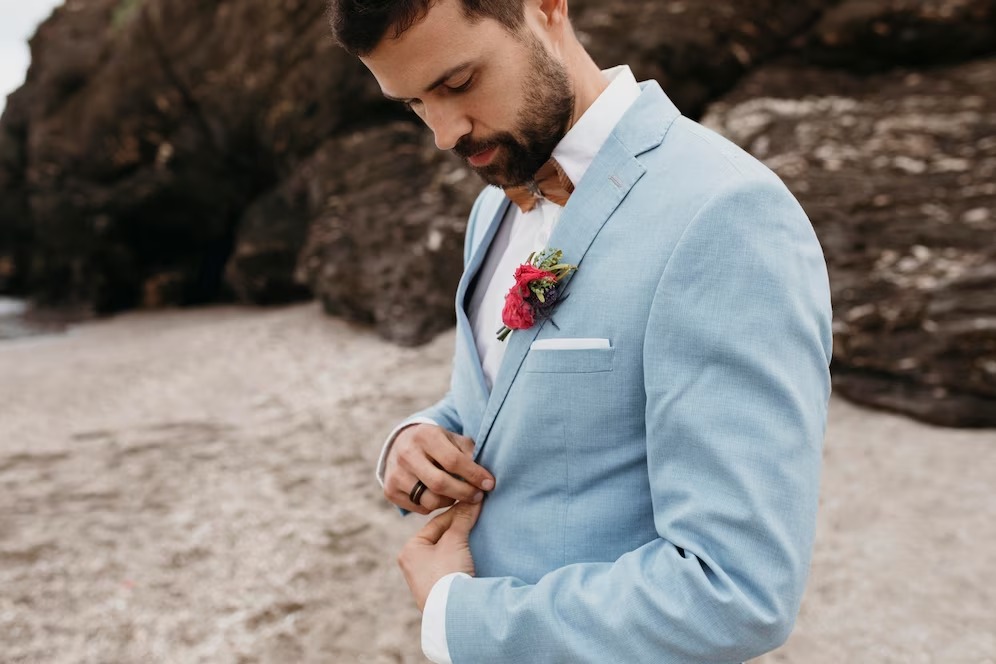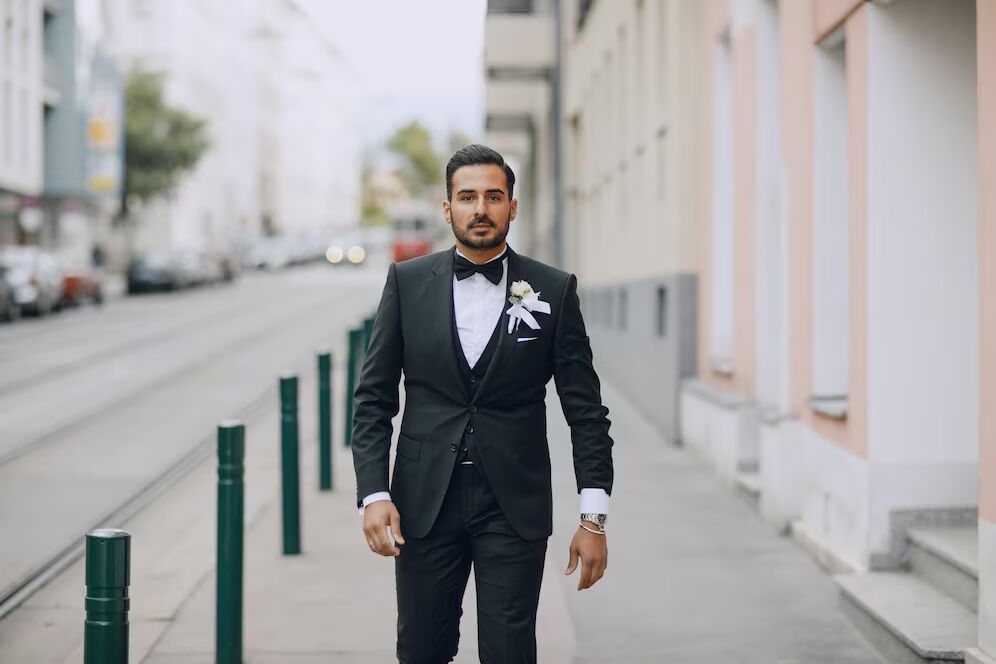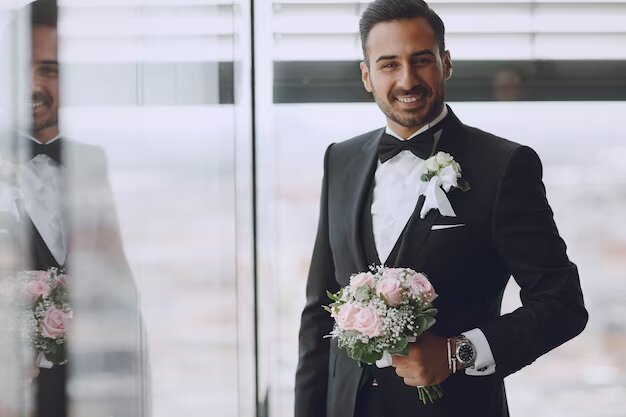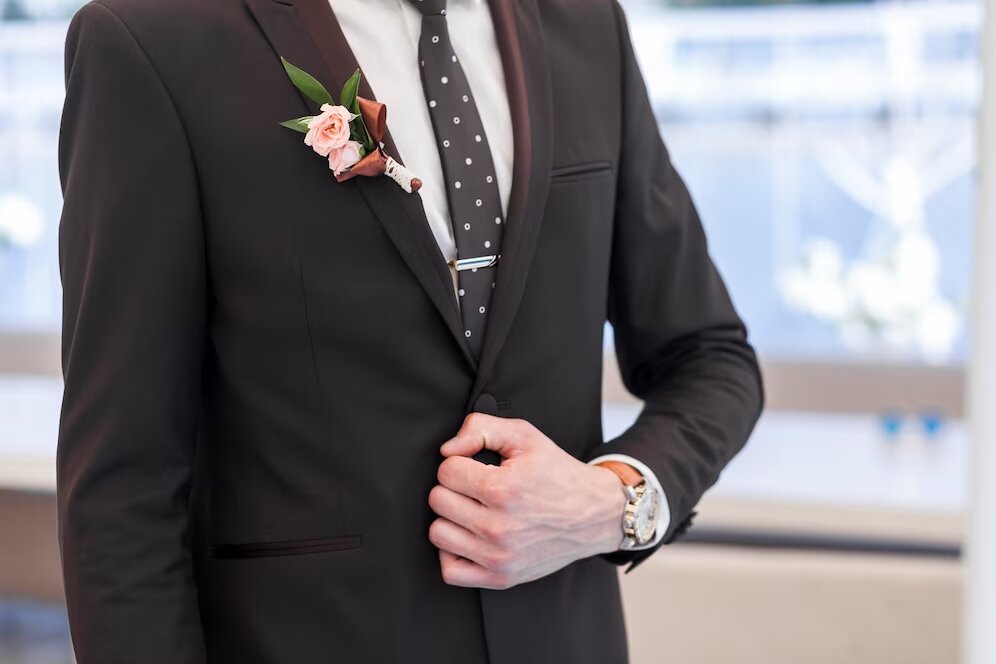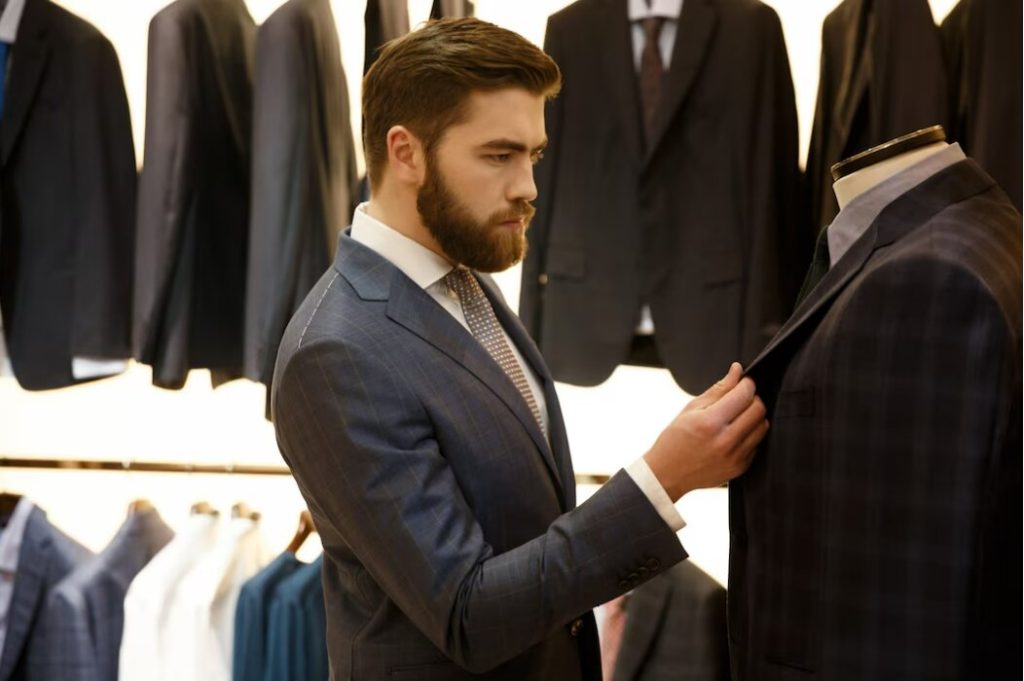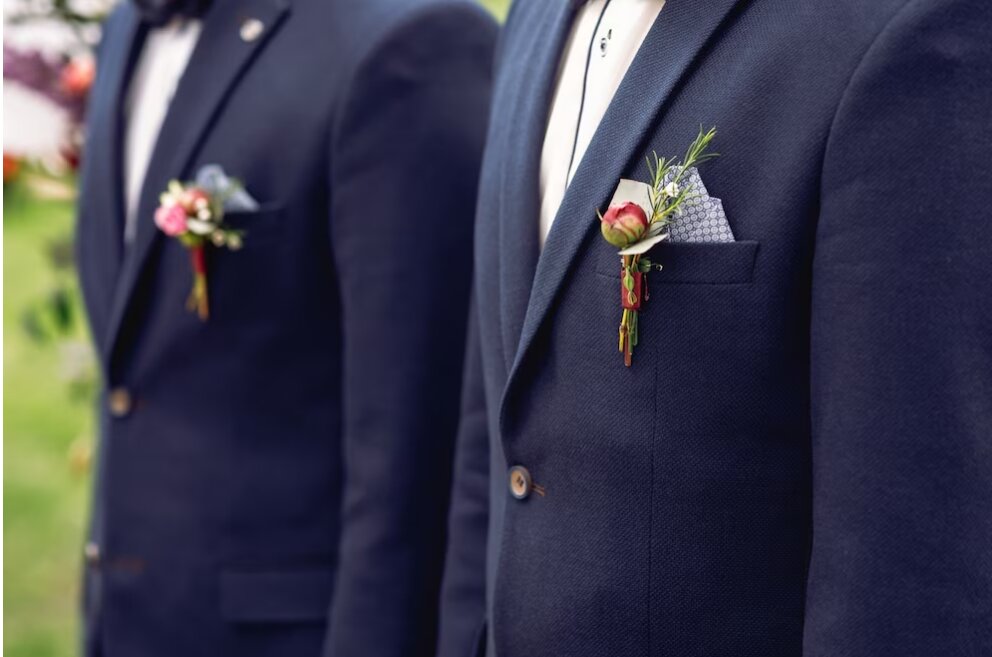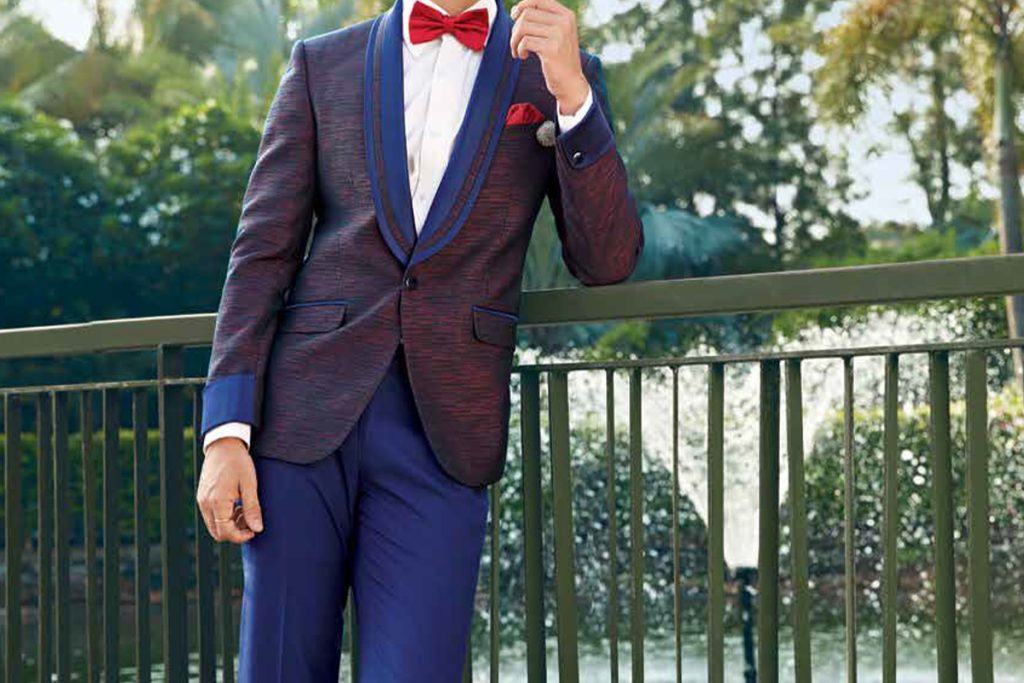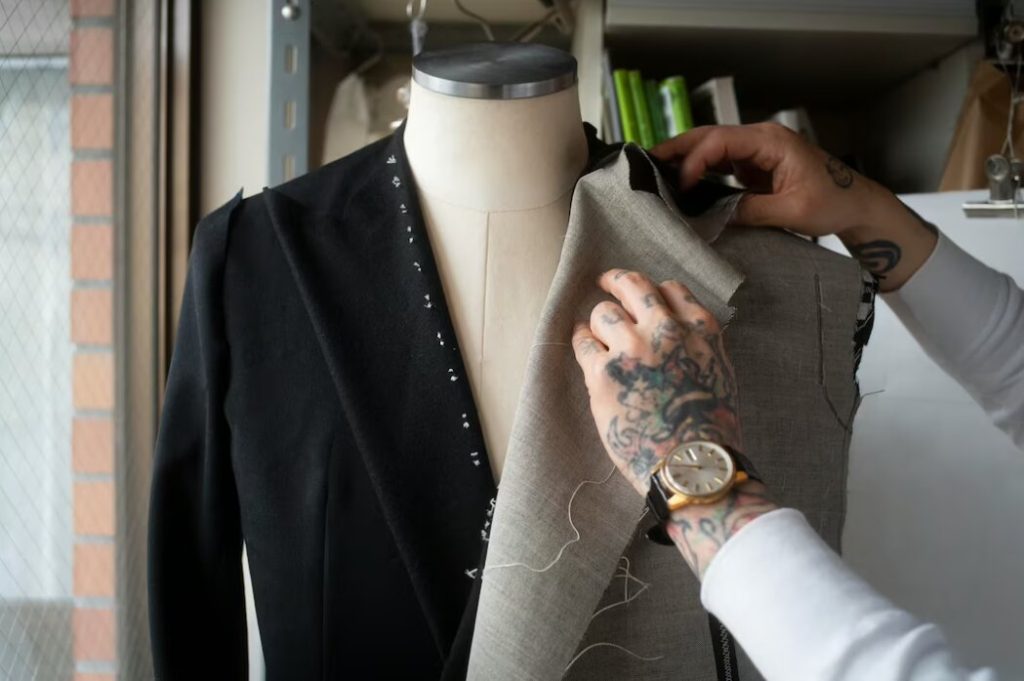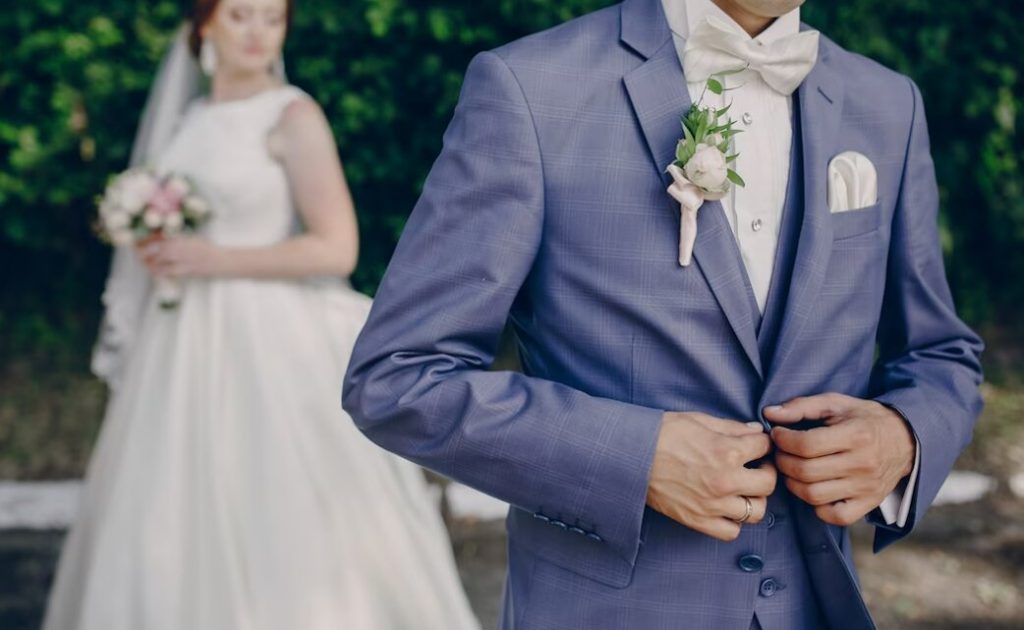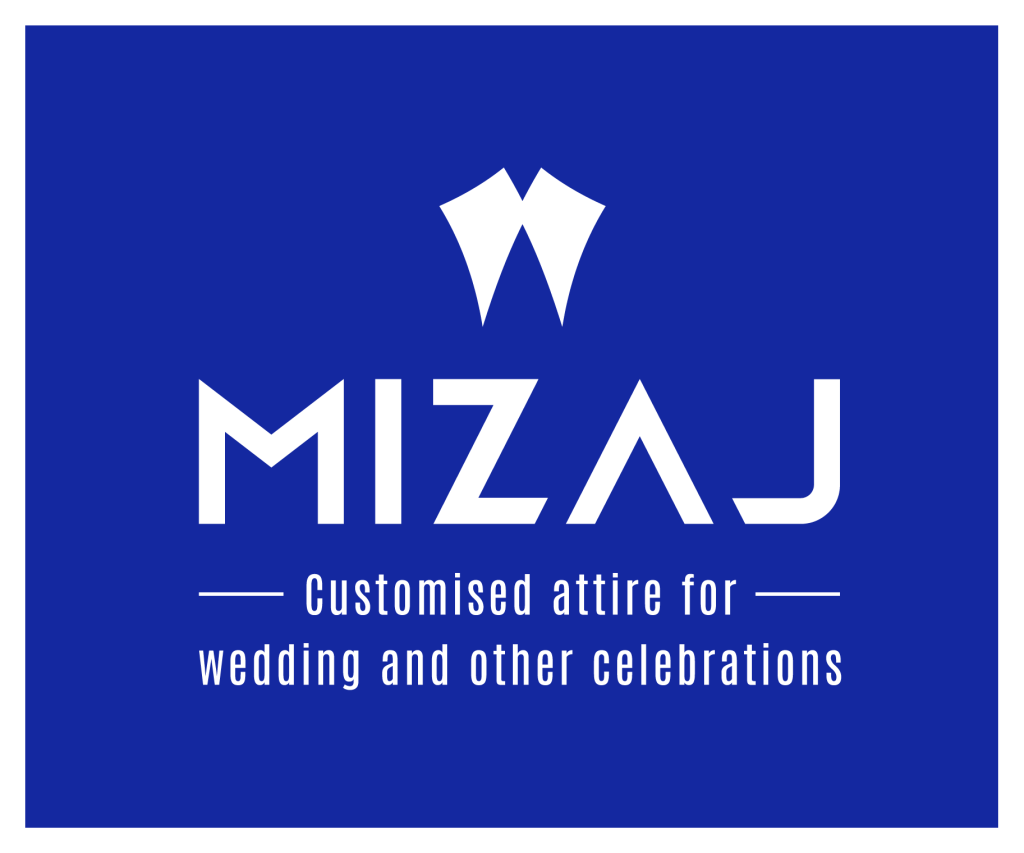Decoding Suit and Tuxedo Suit for Men: Understanding the Key Differences
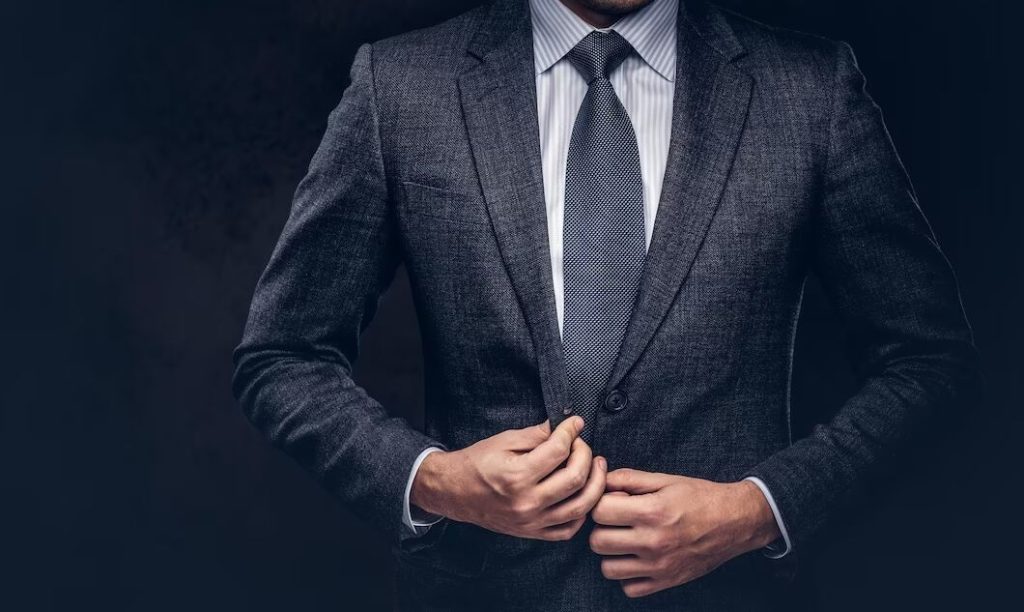
When it comes to understanding the distinction between a tuxedo suit for men and a formal suit for men, it’s essential to be aware of the details, particularly when dressing for a wedding. While both include trousers, a jacket, a dress shirt, and a tie, tuxedos are often associated with upscale formalwear. However, modern tuxedos have evolved beyond that classic image, incorporating various lapel styles, fabrics, and a wider range of colors.
On the other hand, suits can be categorized into formal and casual variations. Formal suits for men are typically worn for professional or dressier occasions, featuring matching trousers and jackets, while casual suits for men offer more versatility and can be adapted for less formal settings.
When deciding between a tuxedo or a suit for a wedding, it’s worth considering the level of formality desired for the event. Tuxedos tend to exude elegance and are commonly preferred for black-tie affairs. Suits, whether formal or casual, can provide a sophisticated and stylish look while allowing for more flexibility in terms of color and design choices. Ultimately, the decision should align with the wedding’s dress code and personal style preferences.
Tuxedos: An Elegant Evening Attire
Definition and origin of tuxedos
The tuxedo, also known as a “dinner suit” or “dinner jacket,” has become a staple of formal wear for men. Its origins trace back to the mid-1800s in the UK, where outdoor sports and activities popularized the need for formal yet comfortable attire. The tailless coat, similar to today’s tuxedo coat, gained popularity, especially during the era of the Prince of Wales.
However, it wasn’t until the late 1800s when the trend reached the United States, with the establishment of the Tuxedo Park club in New York. This club, emphasizing tailless coats, played a significant role in introducing tuxedos to the American audience. Since then, tuxedo suits for men have remained a go-to choice, showcasing class, elegance, sophistication, and ease of wear. Whether it’s a formal suit, casual suits, or a tuxedo, they all have their place depending on the occasion, such as weddings. When deciding between a tuxedo or a suit for a wedding, considering the dress code and personal style preferences is important.
Occasions suitable for wearing a tuxedo
Black-tie events
When attending black tie events, opting for a tuxedo suit for men is a timeless and sophisticated choice. A tuxedo stands out as the epitome of formal wear, exuding elegance and class. While formal suits and casual suits for men have their place, the distinct elements of a tuxedo set it apart.
The refined details like the satin lapels, bowtie, and matching trousers create a refined and polished look. When deciding between a tuxedo vs suit, the dress code and the desired level of formality play a crucial role. However, for black tie events, a tuxedo remains the go-to option, ensuring you’ll make a lasting impression with your style.
Weddings
When it comes to weddings, the choice between a tuxedo suit for men or a formal suit for men can be a matter of personal preference and the event’s dress code. While casual suits for men may be suitable for less formal weddings, if you’re aiming for a touch of elegance and sophistication, considering a tuxedo is worth it. Tuxedos bring a sense of timeless style and formality to the occasion.
However, it’s important to consider the specific dress code outlined by the couple. If the wedding calls for black tie attire, opting for a tuxedo is the traditional and recommended choice. Ultimately, the decision between a tuxedo vs a suit for a wedding depends on the desired level of formality and personal style.
Formal galas and ceremonies
With regards to formal celebrations and functions, picking a tuxedo suit for men is a definitive decision in modern clothing. The refined subtleties, like silk lapels, a tie, and an impeccably custom-made fit, radiate a feeling of immortal style.
Looking at tuxedo vs suit choices, the tuxedo generally starts to lead the pack with regards to saying something. It lifts the general look, adding a quality of refinement. Whether it’s a gala or a black tie occasion, picking a tuxedo guarantees you’ll stick out and order consideration. Choosing a tuxedo ensures you’ll be dressed to impress and command attention.
Key features and components of a tuxedo
Jacket style and lapels
The jacket is a defining element of a tuxedo suit for men, showcasing distinct features that set it apart from a regular suit. One notable difference is the use of satin trim on the lapels, breast/waist pockets, and buttons. This satin detailing creates a subtle contrast against the fabric.
Lapels on a tuxedo jacket are typically made of satin or grosgrain, with black being the most common color. Peak and shawl lapels are popular choices, while notch lapels are typically excluded. These distinctive design elements add an air of elegance to the tuxedo, making it the preferred choice for formal occasions like weddings and other special events.
Trousers and waistband
Tuxedo trousers possess distinct features that enhance their sophisticated appeal. One notable detail is the fabric stripe, matching the lapels, running down the outer seam of the pants. In contrast to casual suits for men, tuxedo trousers typically omit belt loops for a cleaner look, opting for waist tabs instead. Additionally, hems are left uncuffed to maintain the sleek lines.
To preserve the overall aesthetic, a cummerbund is essential, as it prevents the unsightly white triangle under the jacket button. While slightly outdated, a waistcoat remains a viable alternative. These refined touches contribute to the allure of a tuxedo suit for men, making it the ideal choice.
Shirt and accessories
The tuxedo shirt can be intimidating for some men due to its association with the most formal suit for men. However, with a basic understanding, mastering the tuxedo shirt becomes easier. Tuxedo shirts are typically white, featuring a bib front and French cuffs. Customizations like pleated or pique bibs, hidden lapels, or stud buttons are available to personalize the look. These fundamental details ensure the tuxedo shirt complements the overall elegance of a tuxedo suit for men.
When it comes to accessorizing a tuxedo suit for men, attention to detail can truly elevate the overall look. Neckwear is a key accessory, with a black bowtie being the traditional choice, aligning with the fabric of the lapels. Additionally, consider cufflinks that add a touch of sophistication to French cuffs. To complete the ensemble, a pocket square that coordinates with the color scheme adds a stylish flair. Other optional accessories include a formal waistcoat or cummerbund, adding an extra layer of elegance.
Suits: Versatile and Timeless
Definition and historical background of suits
Dressing in professional attire is essential in formal business settings. To master this look, understanding your specific work environment is crucial. Most organizations explicitly mention a professional dress code, leaving no room for ambiguity. Whether it’s a wedding two-piece suit or a stylish blazer set, it can elevate your style and exude sophistication.
Personal Style and Preference:
Expressing Personal Style with a Two-Piece Suit
The term “suit” originates from the French word “suivre,” meaning “to follow.” This reflects the concept that a suit consists of a jacket and a pair of pants that follow each other. Both garments are made from matching fabric, not only in color but also in composition.
A suit is more than just a color-matched ensemble; it represents the cohesion of the jacket and pants in both style and fabric. Formal suits for men are designed for professional or dressier events, conveying a sense of elegance and sophistication. On the other hand, casual suits for men offer more flexibility and can be adapted for less formal settings while maintaining a polished appearance.
Appropriate occasions for wearing a suit
Weddings
Wearing a suit is an absolute must for men attending a wedding, as it signifies respect and adds a touch of sophistication to the occasion. Dressing your best with a well-tailored suit is crucial when attending such an important event. With the right suit, you’ll exude confidence, make a lasting impression, and create cherished memories at the wedding. So, embrace the opportunity to wear a bespoke suit and revel in the timeless elegance it brings to the celebration.
Business dinners
While wearing a suit isn’t necessary for every company dinner or party, it’s important to gauge the formality of the occasion when your business is hosting a formal event. A formal suit for men is fitting for professional and elegant occasions. Casual suits for men can be considered for more relaxed events. Dressing appropriately showcases your professionalism and respect for the occasion, leaving a positive impression on colleagues and stakeholders.
Interviews
For most interviews, a formal suit for men is recommended. It showcases your professionalism and attention to detail. Stick to classic colors like navy, charcoal gray, or black. Pair it with a crisp dress shirt, a coordinating tie, and polished shoes to complete the look. Remember, the goal is to present yourself professionally and make a positive impression. Choosing the right suit shows that you take the opportunity seriously and are prepared to showcase your skills and qualifications.
Different types of suits
Single-breasted vs. double-breasted
Single-breasted suits are versatile and considered the standard choice for most formal and business settings. They feature a single row of buttons on the front, creating a clean and streamlined look. These formal suits for men are suitable for a range of occasions, from job interviews to weddings, and can be easily dressed up or down.
On the other hand, double-breasted suits are known for their bold and distinguished appearance. They feature overlapping front panels and two parallel rows of buttons. Double-breasted suits are typically associated with more formal events and can exude an air of elegance and sophistication.
Three-piece suits
Three-piece suits are a timeless and sophisticated choice for men’s formal attire. Consisting of a jacket, trousers, and a matching waistcoat (or vest), they offer a complete and polished look.
For formal events like weddings or black-tie affairs, a three-piece tuxedo suit for men is a popular choice, combining elegance and style. The waistcoat adds an extra layer of refinement, creating a distinguished appearance.
In more professional settings, a three-piece formal suit can be worn to make a strong impression. It showcases attention to detail and adds an element of sartorial flair to business attire. Casual three-piece suits for menare also gaining popularity, offering a stylish and versatile option for less formal occasions.
Business suits
Business suits are essential for men looking to make a sharp and professional impression in the corporate world. Whether it’s a formal suit for men for important meetings or a more relaxed look for casual business events, the right suit can elevate yourr style and command attention.
Whether you opt for a classic black tuxedo suit for men or a stylish business suit, investing in high-quality, well-fitted attire is key. It’s all about finding the perfect balance between sophistication and comfort, ensuring that you look and feel your best in any business setting.
Components of a suit
Jacket
The centerpiece of any suit, the jacket adds structure and style. Whether it’s a single-breasted or double-breasted design, the jacket sets the tone for the overall look and can vary in lapel styles and button placements.
Trousers
The trousers complete the bottom half of the suit and should match the jacket in fabric and color. They come in various fits and styles, such as flat-front or pleated, and should be tailored to achieve the perfect fit.
Waistcoat (or vest)
While not always necessary, a waistcoat adds an extra layer of sophistication to a three-piece suit. It can be worn as part of a formal ensemble or omitted for a more relaxed look.
Key Differences between Tuxedos and Suits
Formality and dress codes
When it comes to formal events, such as weddings or black-tie affairs, the tuxedo suit for men is the go-to choice. Tuxedos are reserved for the most elegant and high-end occasions, requiring a specific dress code. On the other hand, formal suits for men offer a more versatile option that can be worn for a range of events, from business meetings to semi-formal gatherings. Casual suits for men provide even more flexibility, suitable for everyday wear or less formal occasions.
Jacket and lapel styles
One of the key differences between tuxedos and suits lies in their jacket designs. Tuxedo suits for men often feature satin lapels, creating a luxurious and distinctive look. They may have shawl lapels, peak lapels, or notch lapels, each adding a unique touch. Formal suits for men, on the other hand, typically have traditional lapels made from the same fabric as the rest of the jacket. Casual suits for men offer various lapel styles, including notched or slim lapels, providing a more relaxed and modern aesthetic.
Trousers and waistbands
Tuxedo trousers differ from regular suit trousers in a few ways. Tuxedo trousers typically have a satin stripe running down the leg and do not include belt loops. They are designed to be worn with suspenders or a waistcoat to maintain a clean and formal appearance. In contrast, suit trousers are more flexible and may include belt loops for added convenience. Casual suits for men often offer even more relaxed trouser options, such as chinos or textured fabrics.
Shirt and accessories
When wearing a tuxedo suit, a formal shirt is essential. It typically features a pleated front, French cuffs, and is worn with a bow tie. Accessories like cufflinks, studs, and a formal waistcoat or cummerbund complete the ensemble. With suits, a variety of shirt options are available, including traditional dress shirts or more casual options like button-down shirts. Neckties or slim ties are commonly worn with suits, allowing for a more diverse range of styles and patterns.
Choosing the Right Attire for the Occasion
Considerations for selecting the right attire
When deciding what to wear for an event, several factors should be taken into account. Consider the formality of the occasion and whether a tuxedo suit for men or a formal suit for men would be more appropriate. Additionally, consider the venue, time of day, and any specific dress code instructions provided.
Dress codes and guidelines for different events
Understanding dress codes is crucial for dressing appropriately. For formal events like weddings, a tuxedo is often expected, while formal suits are suitable for a range of occasions, including business functions. Casual suits for men offer a more relaxed option, perfect for semi-formal or everyday wear. Familiarize yourself with dress codes such as black tie, cocktail attire, or business casual to ensure you adhere to the guidelines.
Personal style and preferences
While dress codes provide guidance, it’s important to express your personal style and preferences when selecting your attire. Both tuxedos and suits offer opportunities for customization, allowing you to choose colors, fabrics, and fits that reflect your taste. Consider factors like your body type, preferred lapel style, and overall aesthetic to create a look that makes you feel confident and comfortable.
Conclusion
In conclusion, understanding the nuances between tuxedo suits for men, formal suits for men, and casual suits for men is essential when it comes to dressing appropriately for various occasions. Whether it’s a wedding, a business event, or a formal gala, choosing the right attire can make a significant impact on your overall appearance and confidence.
Tuxedos exude elegance and are ideal for black-tie affairs, while formal suits offer versatility for a range of formal events. Casual suits provide a stylish and. relaxed option for less formal gatherings. At Mizaj, we understand the importance of personal style and preferences, allowing you to express yourself through your choice of attire. With our wide range of tuxedos, formal suits, and casual suits for men, you can find the perfect outfit that aligns with the dress code and showcases your unique sense of style.
FAQs
1.What is the main difference between a tuxedo and a suit?
The key distinction between a tuxedo suit for men and a formal suit for men lies in their formality. Tuxedos are more formal, featuring satin lapels and trousers, while suits are versatile for various occasions.
2.Can you wear a tuxedo to a non-formal event?
While tuxedos are traditionally reserved for formal events, they can be worn to non-formal events if you want to make a stylish statement. Just be mindful of the dress code and the overall vibe of the event.
3.Are there any specific rules for matching accessories with tuxedos and suits?
When matching accessories with tuxedos and suits, specific rules apply. Tuxedos call for bowties, cummerbunds or vests, and black patent leather shoes, while suits pair well with neckties, pocket squares, and leather dress shoes that complement the suit’s style.
4.Can you wear a suit to a black-tie event?
Suits are generally suitable for black-tie events, but adhere to the specified dress code to ensure appropriateness. If the invitation requests a tuxedo, opt for a tuxedo suit for men for the expected level of formality.
5.How do I know if a dress code requires a tuxedo or a suit?
To determine if a dress code requires a tuxedo or a suit, carefully review the invitation or consult the event organizer, paying attention to keywords like “black-tie” or “formal.”
6.What are some common mistakes to avoid when wearing a tuxedo or a suit?
When wearing a tuxedo or a suit, avoid common mistakes such as improper fit, mismatched accessories, inappropriate footwear, neglected grooming, and not following dress code guidelines. Paying attention to details ensures a polished and stylish appearance.
-
 Wedding Suits in Trichy: Your Guide To The Best Place To Buy Suits For Every Occasion
Wedding Suits in Trichy: Your Guide To The Best Place To Buy Suits For Every Occasion -
 The Ultimate Guide to Wedding Suits in Madurai: Where Tradition Meets Elegance
The Ultimate Guide to Wedding Suits in Madurai: Where Tradition Meets Elegance -
 How to Buy the Perfect Wedding Suit in 2025: The Ultimate Guide
How to Buy the Perfect Wedding Suit in 2025: The Ultimate Guide -
 Custom-Tailored Wedding Suits vs. Readymade Suits: Understanding the Difference
Custom-Tailored Wedding Suits vs. Readymade Suits: Understanding the Difference -
 Unveiling the Essence of The Perfect Groom's Ensemble; Expert Styling Tips from Mizaj
Unveiling the Essence of The Perfect Groom's Ensemble; Expert Styling Tips from Mizaj -
 Decoding Suit and Tuxedo Suit for Men: Understanding the Key Differences
Decoding Suit and Tuxedo Suit for Men: Understanding the Key Differences -
 Two-Piece or Three-Piece: Mastering the Art of Suit Styling
Two-Piece or Three-Piece: Mastering the Art of Suit Styling -
 Grand Galada Mall: The Perfect Venue for Wedding Shopping
Grand Galada Mall: The Perfect Venue for Wedding Shopping -
 The Perfect Men's Wedding Suits in Mizaj Coimbatore
The Perfect Men's Wedding Suits in Mizaj Coimbatore -
 How to Choose a Fabric for Your Custom-made Suit
How to Choose a Fabric for Your Custom-made Suit -
 A Groom's Guide: How to Choose a Dapper Wedding Collection
A Groom's Guide: How to Choose a Dapper Wedding Collection -
 Why are Mizaj's custom-tailored suits a cut above the rest?
Why are Mizaj's custom-tailored suits a cut above the rest? -
 Make your wedding special with bespoke wedding suits from Mizaj.
Make your wedding special with bespoke wedding suits from Mizaj. -
 Where to find the best bespoke suits for men?
Where to find the best bespoke suits for men? -
 Looking for the best wedding suits in Chennai: Here's what you need to know!
Looking for the best wedding suits in Chennai: Here's what you need to know!
